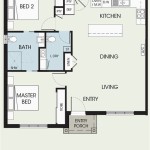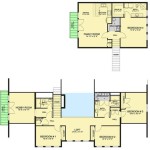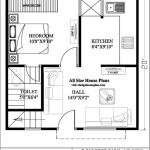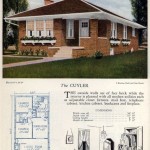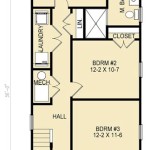House Plans for Pie-Shaped Lots: Maximizing Space and Design
Pie-shaped lots, also known as fan-shaped or triangular lots, present unique challenges and opportunities for homeowners and builders. These lots, characterized by a narrow front and a widening rear, require careful consideration during the house planning process to ensure efficient space utilization, aesthetically pleasing design, and compliance with local building codes. Successfully navigating the intricacies of a pie-shaped lot involves understanding its limitations and leveraging its potential advantages.
The primary hurdle associated with pie-shaped lots stems from their irregular geometry. Standard rectangular or square house plans are often unsuitable without significant modifications. This necessitates custom designs or adaptations of existing plans, potentially increasing design and construction costs. However, the wider rear portion of these lots also presents opportunities for expansive living areas, large gardens, or unique architectural features that might not be possible on traditionally shaped properties.
Effective house planning for pie-shaped lots demands a comprehensive understanding of setback requirements, easement restrictions, and local zoning regulations. Setbacks, which define the minimum distance a structure must be from property lines, can significantly restrict the buildable area, especially near the narrow front of the lot. Easements, granting others the right to use a portion of the property (e.g., for utility lines), further influence the placement and orientation of the house. Zoning regulations dictate permissible land uses, building heights, and density, all factors influencing the overall design and feasibility of a house plan.
Choosing the right architectural style is crucial for maximizing the visual appeal and functionality of a house on a pie-shaped lot. Styles that lend themselves to angled or asymmetrical designs, such as contemporary or modern architecture, often integrate more seamlessly with the lot's irregular shape. Traditional styles, while adaptable, might require more creative adjustments to avoid appearing awkwardly placed or disproportionate.
Key Point 1: Optimizing Space Within the Building Envelope
The building envelope, defined by setback lines and other regulatory constraints, dictates the permissible buildable area on a pie-shaped lot. Maximizing usable space within this envelope is paramount. This involves careful consideration of the house's footprint, orientation, and internal layout. Strategies for optimization include:
Strategic Placement: Orienting the house strategically on the lot is critical. Positioning the wider portion of the house towards the rear maximizes space for living areas, outdoor amenities, and landscaping. The narrower front portion can be utilized for garages, entryways, or smaller rooms like offices or guest bedrooms.
Angled Designs: Incorporating angled walls and rooms into the design can effectively utilize the irregular shape of the lot. Angled walls can create unique interior spaces and visual interest, while also allowing for better space utilization along the converging property lines.
Multi-Story Structures: Building upwards rather than outwards can significantly increase the usable square footage on a pie-shaped lot. A two-story or multi-story design allows for a smaller footprint while still providing ample living space. This is particularly advantageous in areas with strict setback requirements.
Open Floor Plans: Open floor plans contribute to a sense of spaciousness and flexibility, making them well-suited for pie-shaped lots. Eliminating unnecessary interior walls creates larger, more versatile living areas and facilitates better flow throughout the house.
Creative Storage Solutions: Incorporating built-in storage, such as shelving, cabinets, and closets, maximizes usable space and minimizes clutter. Utilizing vertical space for storage is particularly effective in smaller homes or areas with limited floor space.
Outdoor Living Spaces: Extending living areas outdoors with patios, decks, or gardens creates additional usable space and enhances the overall enjoyment of the property. Outdoor spaces can be designed to complement the shape of the lot and provide a seamless transition between indoor and outdoor living.
Key Point 2: Addressing Privacy and Natural Light
Pie-shaped lots often present challenges related to privacy and natural light, particularly due to the angled property lines and the potential proximity of neighboring houses. Careful planning is required to mitigate these concerns and create a comfortable and inviting living environment.
Window Placement: Strategically positioning windows to maximize natural light while minimizing unwanted views is essential. High windows, clerestory windows, and skylights can provide ample light without compromising privacy. Using window coverings, such as blinds, shades, or curtains, allows for control over light and privacy levels.
Landscaping Strategies: Landscaping plays a crucial role in enhancing privacy and creating a visual buffer between the house and neighboring properties. Planting trees, shrubs, and hedges along property lines can effectively screen unwanted views and create a sense of seclusion.
Fences and Walls: Fences and walls can provide additional privacy and security. The height and style of fences and walls should be carefully considered to comply with local regulations and complement the overall aesthetic of the house.
Orientation for Sunlight: The orientation of the house should be carefully considered to maximize sunlight exposure during the day. South-facing windows typically receive the most sunlight, while north-facing windows receive the least. East-facing windows provide morning sunlight, while west-facing windows receive afternoon sunlight.
Courtyard Designs: Internal courtyards or atriums can provide a private outdoor space that is sheltered from the elements and shielded from neighboring properties. Courtyards can also bring natural light into the center of the house.
Window Tinting and Films: Applying window tinting or films can reduce glare, heat gain, and UV exposure while also enhancing privacy. Tinted windows can make it more difficult to see inside the house from the outside.
Key Point 3: Considerations for Resale Value and Future Development
While designing a house plan for a pie-shaped lot, it's important to consider the potential impact on resale value and future development options. Optimizing the layout, incorporating desirable features, and ensuring compliance with local regulations can all contribute to the long-term value and appeal of the property.
Market Research: Conducting thorough market research to understand the preferences and expectations of potential buyers in the area is crucial. This research can inform design decisions and ensure that the house is aligned with market demand.
Flexible Design: Incorporating flexible design elements that allow for future modifications or expansions can enhance the long-term value of the property. Designing rooms that can be easily repurposed or converted to different uses can increase the appeal of the house to a wider range of buyers.
Desirable Amenities: Including desirable amenities, such as a modern kitchen, updated bathrooms, a well-landscaped yard, and energy-efficient features, can significantly increase the resale value of the house. These amenities can make the house more attractive to potential buyers and justify a higher selling price.
Compliance with Regulations: Ensuring that the house plan complies with all applicable local building codes, zoning regulations, and setback requirements is essential. Non-compliance can lead to costly delays, fines, and potential legal issues.
Professional Consultation: Consulting with experienced architects, builders, and real estate professionals can provide valuable insights and guidance throughout the design and construction process. These professionals can help identify potential challenges and opportunities and ensure that the house plan is aligned with the homeowner's goals and budget.
Long-Term Planning: Thinking long-term about the future use and development of the property is important. Considering potential additions, renovations, or subdivision options can help maximize the long-term value and flexibility of the property.
In summary, house plans for pie-shaped lots require a nuanced approach that carefully considers the unique challenges and opportunities presented by their irregular geometry. By optimizing space within the building envelope, addressing privacy and natural light concerns, and considering the impact on resale value and future development, homeowners and builders can create functional, aesthetically pleasing, and valuable properties on these uniquely shaped lots.

Wishlist House Plan Contemporary Homes Mediterranean Prairie Craftsman Shingle Style Traditional Transitional Designs

Craftsman House Plan For A Pie Shaped Or Rear View Lot 2734 Sq Ft 64544sc Architectural Designs Plans

House Plans For Narrow Lots And Wide Probuilder

Craftsman House Plan For A Pie Shaped Or Rear View Lot 2734 Sq Ft 64544sc Architectural Designs Plans

House Plan 1028 Willow Creek Circle European

63 Triangle Lot Pie Shape Ideas House Plans French Country

Altaira House Plan Custom Home Plans Sater Design Collection

4 534 Jenish House Design Limited

Luxury Contemporary Style House Plan 7536

Building A Home One Step Forward Ten Steps Back The Makerista


